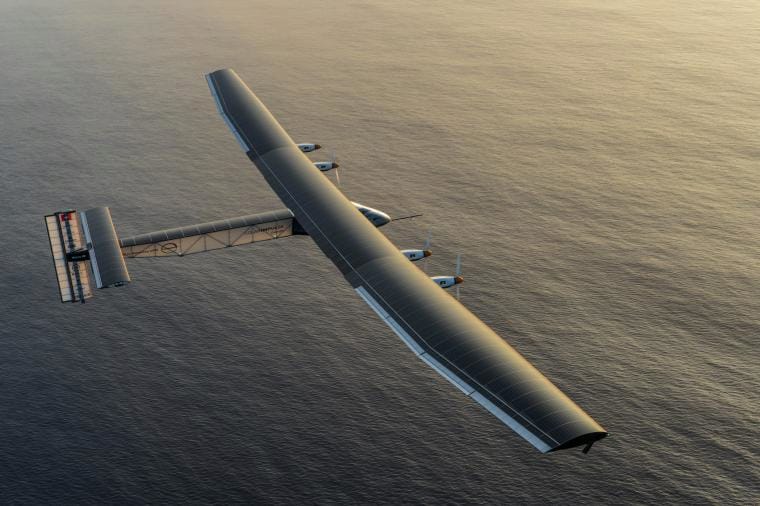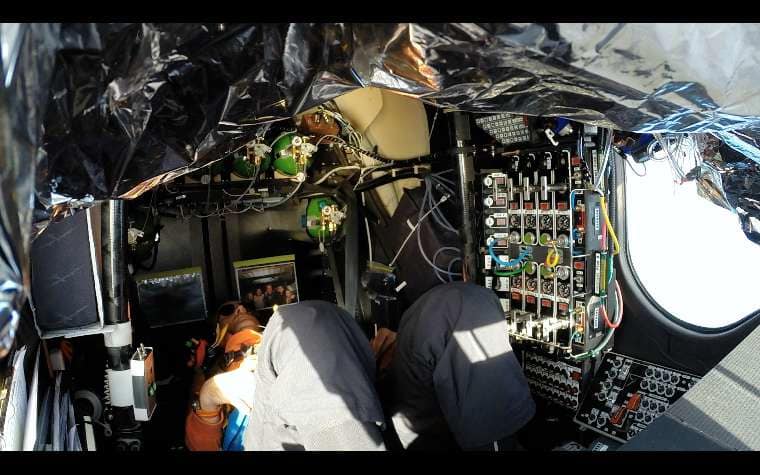Round-The-World Trip Is On Track For Solar Airplane
Wednesday, Apr 13 2016
By
Comms Team
Last July, pilot André Borschberg wearily stepped out the cockpit he’d been confined to for five days and five nights. He had just flown non-stop over the Pacific Ocean from Japan to Hawaii in the Solar Impulse 2, an airplane propelled entirely by solar energy.
Today, nine months after touching down in Oahu, Solar Impulse 2 is resuming its historic mission to fly around the world. Borschberg’s partner Bertrand Piccard is piloting this next flight, the ninth leg of the journey, from Hawaii to California.
I was inspired by American pioneers. Now I'm proud to fly #Si2 to #USA on April 21 3PM UTC https://t.co/PkVum2qvbg pic.twitter.com/8fdzL07pep
— Bertrand PICCARD (@bertrandpiccard) April 21, 2016
To circumnavigate the globe, 80 mechanical and electrical engineers, technicians, aerodynamic specialists and physicists collaborated to design this glider-like plane to withstand the nearly 22,000-mile trip, separated into 13 legs spanning several hours to several days.
Though it has the wing span of a Boeing 747, Solar Impulse 2 weighs only 5,070 pounds (about that of a small van), making it “the largest aircraft ever built with such a low weight” according to its website. Its frame is primarily constructed of ultralight materials like carbon fiber and alveolate foam, but most essential to its successful round-the-world trip are the 17,248 solar cells atop its wings, fuselage and stabilizers.

Collecting up to 340 kilowatt hours of solar energy per day, these next generation SunPower Maxeon® solar cells charge the motors that lift the airplane from 5,000 to 29,500 feet each day. Once the sun sets, Solar Impulse 2 glides back down to a cruising altitude of 5,000 feet before firing up its batteries that propel it through the night. When the sun emerges the next morning, the airplane again draws power from the solar cells and begins its ascent.
“SunPower's solar technology continues to be the choice for cutting-edge projects like Solar Impulse that blaze new trails for renewable energy,” said Tom Werner, SunPower president and CEO. “We share a pioneering spirit that drives us to break boundaries, set world records and demonstrate the infinite potential of solar through relentless innovation.”
On its last leg, Solar Impulse 2 broke three aviation records including longest solo solar flight ever, but these feats haven’t come comfortably. Minimizing the weight of the plane meant sacrificing the size of the cockpit and the pressurization system that regulates temperature. The result- a multifunctional seat that serves as a toilet, bed and yoga mat and temperatures ranging from -4° to 95° Fahrenheit.

The tight quarters and constant need to shed or add layers may be a nuisance, but it’s a trivial matter to Piccard and Borschberg who want the world to know the infinite capabilities of clean technologies.
“This airplane was not built to carry passengers but to carry a message,” Piccard said. “Flying around the world with no fuel demonstrates that we can reach incredible goals with clean and energy efficient technologies. Let’s use them also on the ground!”
You can follow the Solar Impulse expedition live here.
Article Type